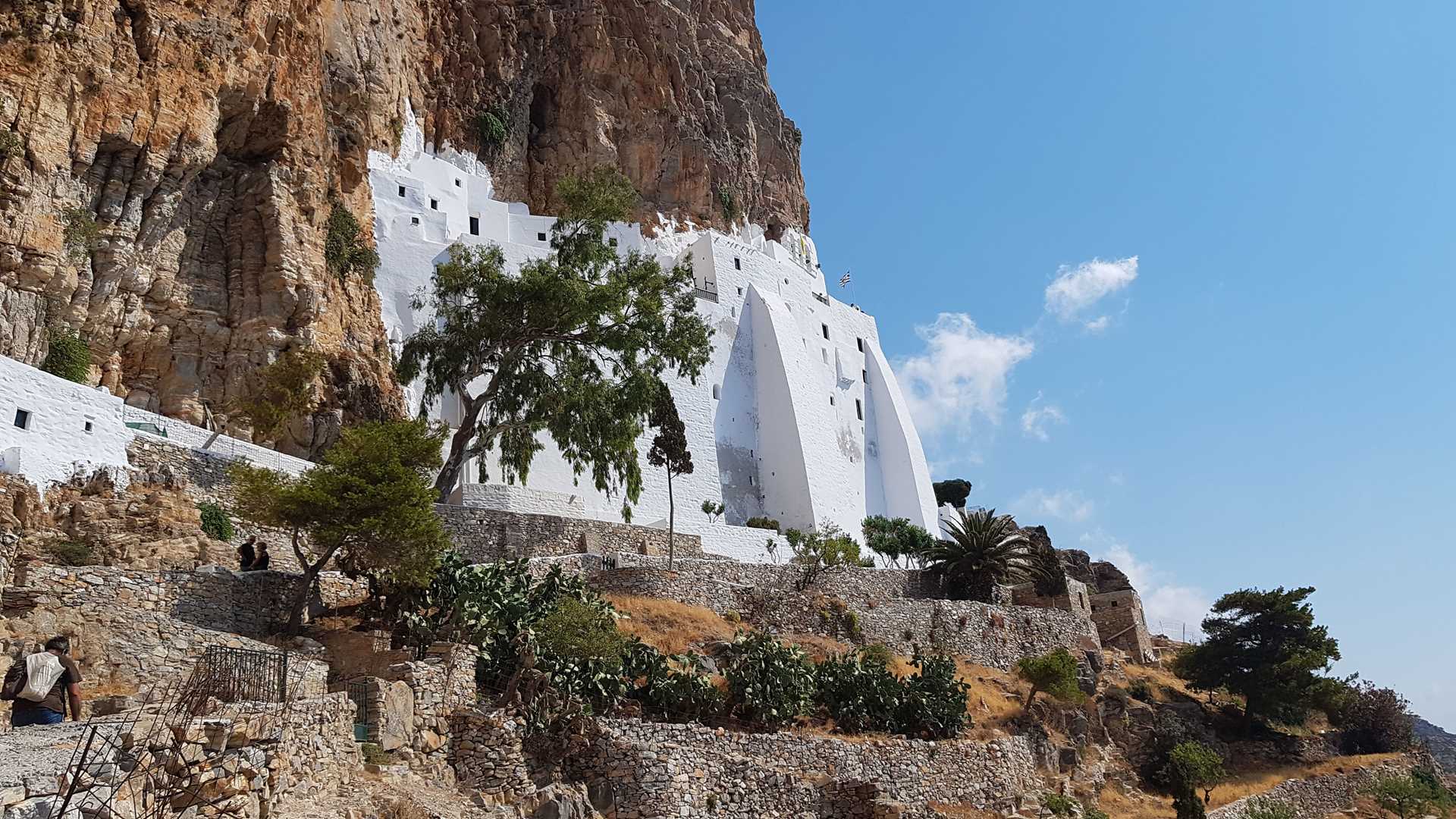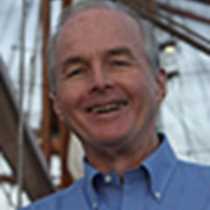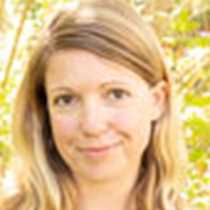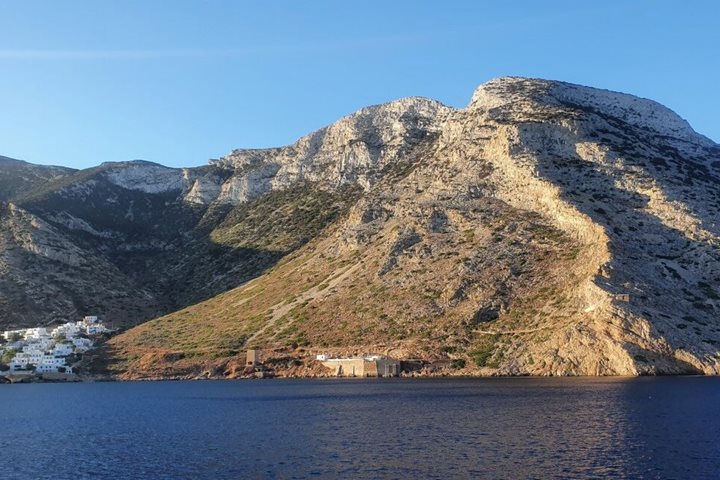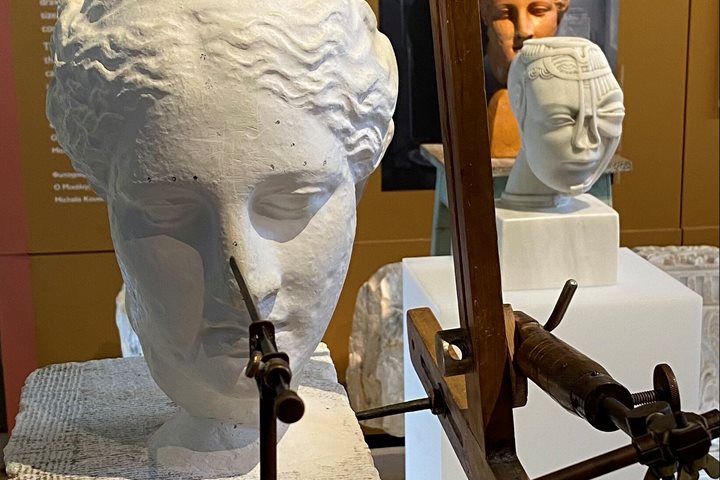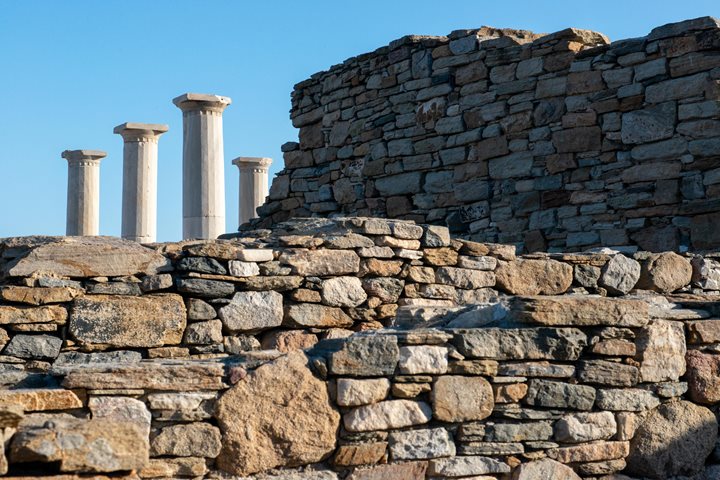We sailed into the beautiful bay of the village of Katapola, on the remote isle of Amorgos, at 7 a.m. The island sits on the southeastern edge of the Cyclades, a stepping-stone to the great island of Crete, 240 kilometers due south.
First. we drove to the monastery of Panagia Hozoviotissa, one of the most wonderfully sited monasteries in the world. It is carved into the living rock some 400 meters above the blue Aegean Sea. From the bus parking area, we could see the brilliantly whitewashed, seven-story monastery clinging like a swallow’s nest to the cliff face. We started up 350 vertical steps in the bright sun, then entered the monastery up a narrow passageway cut into the living rock. Angellos provided very good commentary on our way up and into the church. Once inside the tiny church, we saw the monastic stalls where the monks prayed antiphonally every day. The famous icon of the Blessed Virgin Mary and child was on display. It is said that a woman named Hozoviotissa sent this icon from Palestine, and it arrived at this spot in an unmanned boat during the Iconoclastic Controversy of the 8th century. The monastery was built to honor the icon and provide a sufficiently remote place for the monks to pray.
After our trek to the monastery, we had free time in the beautiful unspoiled village of Chora. Here, the brilliant white alleys with their brilliant blue doors and windows were covered over with blooming magenta bougainvillea and white, red, and pink oleanders. It was deliciously beautiful. On our walk, I noticed an ancient Roman tombstone strategically placed in the lintel of one of the houses. (They really did reuse everything!) Once back in Katapola, many of us went for a swim in the cool blue Aegean.
After lunch, the crew went aloft and set sails at half past 2 p.m. We followed Homer’s advice and sailed in the “wine-dark sea.” I gave a talk at 4 p.m. on the complex script of Linear B, which we now know to be the earliest evidence of the Greek language. This dates the language back to 1650 B.C.E., earlier than Sanskrit and the oldest written vernacular European language. Just after 6 p.m., Tom O’Brien gave an informative talk on the rich history of the Sea Cloud, from its historic inception until the present, nearly 85 years later. After Tom’s talk, we were privileged to attend the open house of the ten original staterooms. Champagne and caviar were in plentiful supply as we meandered through these elegant staterooms. Imagine that E.F. Hutton designed and commissioned this ship for himself, his wife Marjorie (Merriweather Post), their daughter Dina (Merrill), and 70 crewmembers! All of the staterooms had working fireplaces, one of the unique characteristics of Sea Cloud.

